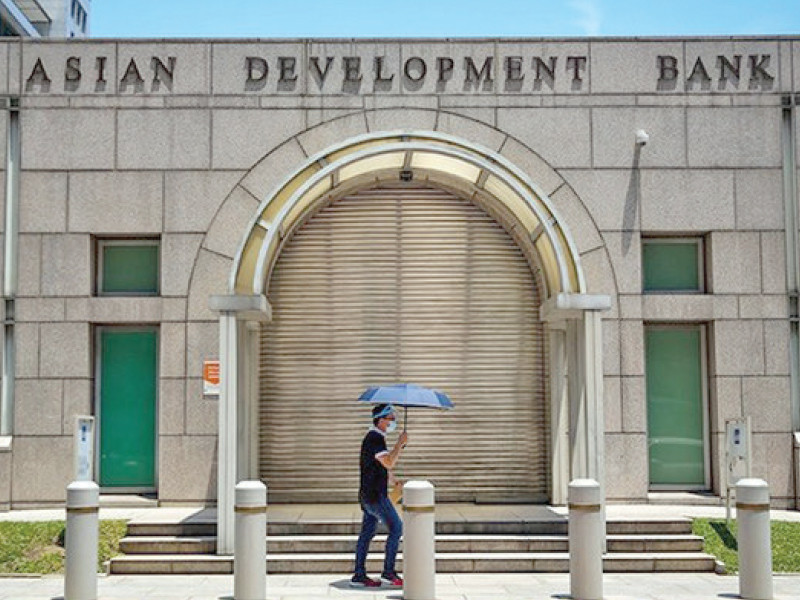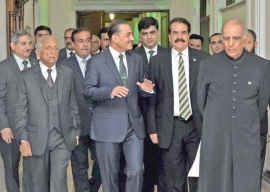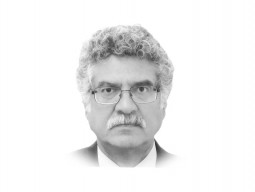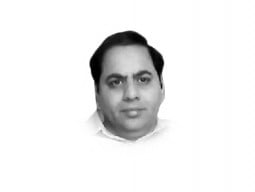
The Asian Development Bank has said that the politician-developer nexus in Pakistan for building gated housing societies is giving a rise to inequality and insecurity. The bank has also claimed that the urban population of the country is hugely understated.
The Pakistan National Urban Assessment a comprehensive report by the Manila based lender has highlighted the fault lines in the urban planning, which is causing serious issues for the people residing in the cities.
The report comes amid a mushroom growth around Pakistan's motorways and national highways, some getting preferential access to the motorways, indicating a deep nexus between the developers and their facilitators. A recent road access to M-2 motorway to a house society has also raised safety concerns, as the vehicles would be directly exiting to the motorway through a loop link.
"The politiciandeveloper nexus has facilitated the rise of exclusive, gated communities that further segregate cities into rich and poor areas, potentially fueling urban tensions", said the ADB.
The ADB report stated that the availability of land and housing is constrained by political economic considerations. This is a result of multiple factors that restrict the availability of land for development and deprive low-income groups of access to affordable housing.
"It has been driven by the politiciandeveloper nexus, which has facilitated the rise of exclusive gated communities fostering segregation, inequality, and insecurity", according to the lender.
The ADB said that the government was using taxation policies to shelter private land interests.
The report also said that former prime minister Imran Khan's government could not achieve its goal of building five million affordable homes. With a monthly mortgage repayment of Rs20,000, the Naya Pakistan Housing Programme launched by the federal government in 2020 is clearly not targeting low-income groups, said the lender.
It added that by mid-2023, the programme had completed only 53,000 housing units with another 28,000 under construction, well short of the target to provide 5 million housing units to those currently not owning an independent residential unit in Pakistan.
Urban population under stated
There are concerns that Pakistan's urban population has been underestimated, claimed the report. It said that since the 1981 census, Pakistan has defined urban and rural areas based on administrative boundaries, ignoring expansions and fast growing peri-urban areas.
The ADB has cited the United National Development Programme and interviews of Pakistani officials to prove its point that the urban population was grossly understated.
The United Nations Development Programme (UNDP) in Pakistan in 2019 noted that while the government estimated the urban population at 36.44% of total population in 2017, other estimates suggested that the ratio of urban to rural population could be 40% or even higher.
In its footnote, the report stated that even earlier on, using a geographic information system and an agglomeration index that combined travel time, population density, and biophysical and infrastructure variables as metrics, a study by the International Food Policy Research Institute (IFPRI) also estimated that 70% of Pakistan's population in 2016 lived in peri-urban or urban areas.
Adjusting for the underestimation of urban population will allow urban development and planning to respond to the actual and emerging urbanization challenges, it added.
The recent census has reported Pakistan's total population in 2023 to 241.5 million, with an urban population of 93.8 million.
The ADB stated that rapid urban population growth has led to the unplanned sprawling of Pakistan's cities. With 2.7%, the country's official urbanization rate in 2022 ranked third in South Asia. However, it may be grossly underestimated given the rigid urbanrural classification that excludes fast-growing peri-urban areas from official statistics
"The government officials interviewed during this assessment suggested that the hidden and unaccounted-for urban population could have been as high as 60% of Pakistan's official urban population in 2020," according to the lender.
In 2017, Karachi's official population stood at 14.9 million but the city officials disputed the official figure and believed it to have reached 22 million25 million, said the ADB. The latest 2023 census has put the city's population at 20.3 million.
Lahore, the second-largest metropolitan area after Karachi, is also the country's fastest-growing major city. The 2017 census put the population at 11.1 million, but city officials estimated that the number might have reached 13 million to 15 million, said the lender. The latest census puts Lahore's population at 13 million.
By 2017, 54% of the country's urban dwellers lived in just 21 major urban localities with populations exceeding 500,000, with 34.5% of them in the megacities of Karachi and Lahore. In each of the provinces, the capital cities hold a disproportionately large share of the provincial urban population, concentrating both the political and administrative pressures of urbanization.
Areas with fewer than 50,000 people, comprising 369 of the 588 designated urban localities in the 2017 census, accounted for only 12.44% of Pakistan's urban population. Meanwhile, of the 97 cities with 100,000 or more inhabitants, Punjab was home to 58, Sindh to 22, KP to 11, and Balochistan to 5 cities.



1723970256-0/BeFunky-collage-(1)1723970256-0-270x192.webp)















COMMENTS
Comments are moderated and generally will be posted if they are on-topic and not abusive.
For more information, please see our Comments FAQ